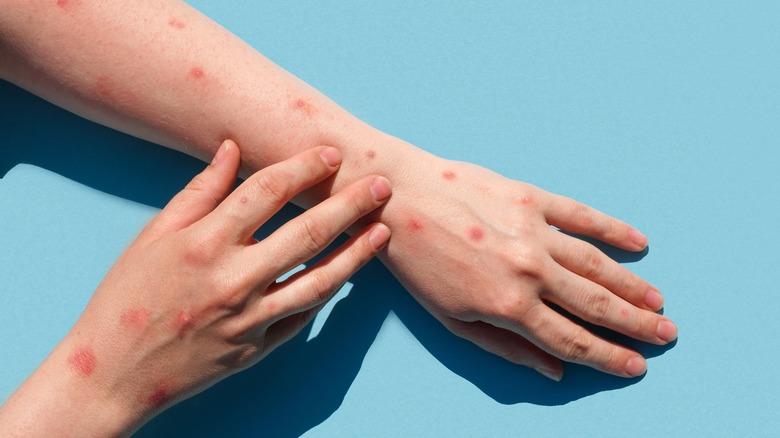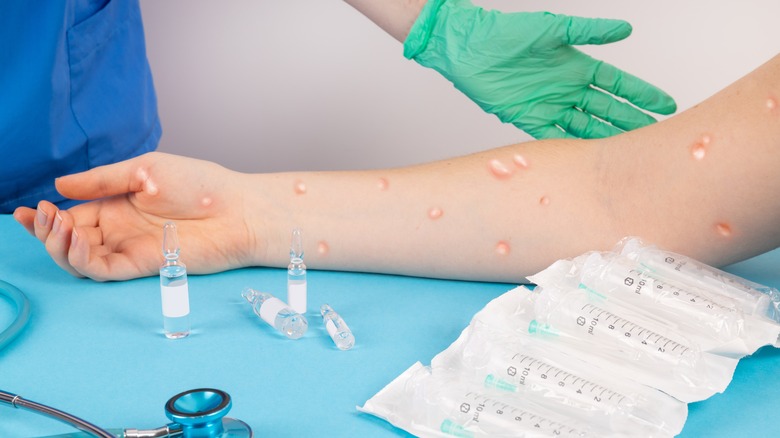What To Expect When You Get Tested For Monkeypox
According to the BBC, monkeypox is a rare illness. In 2022, the monkeypox outbreak was first reported in Europe, U.S., Canada, and Australia. The disease is continuing to spread across the globe, with over 2,800 cases in the UK alone, as of July 2022. Per the Centers for Disease Control and Prevention (CDC), the monkeypox virus is similar to smallpox but different from chickenpox. Luckily, monkeypox is not as severe as smallpox and shows comparatively milder symptoms. However, the CDC notes that the 2022 outbreak is not the first.
In 1958, scientists observed pox-like symptoms in the monkeys kept in captivity for research — hence its name, monkeypox (per the CDC). In 1970, the first signs of monkeypox cases emerged in humans in African countries, reports the BBC. Monkeypox is a contagious disease, and experts advise not to come close to those who are infected and symptomatic — especially for sexual contact.
What you need to know before a monkeypox test
If you have come in contact with someone who has monkeypox symptoms or noticed redness, multiple lesions, or pus-filled pimples on your body, you may require a monkeypox test (via The New York Times). Initially, you may have to monitor the symptoms for at least two to three weeks. The test is usually prescribed by a physician after they examine your symptoms to determine if there's a risk of monkeypox infection. As there are no home monkeypox testing kits, you may have to go to healthcare centers or clinics for a proper test.
Per the CDC, it's important for the healthcare staff to wear protective gear and use sterile objects while performing the swab test. According to the American Society of Microbiology (ASM), patients with monkeypox symptoms have to go for a nucleic acid amplification test, also known as a molecular and polymerase chain reaction (PCR) test. It is a highly accurate procedure based on genetic examination by taking a sample from the patient's lesion, according to the ASM. The CDC also reports that a minimum of two swabs are taken during the test for increased accuracy.


